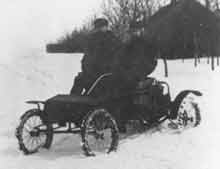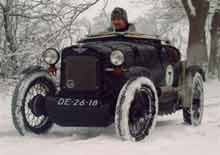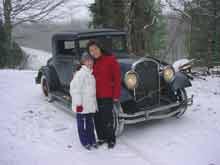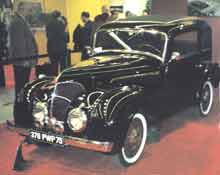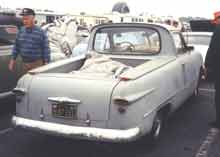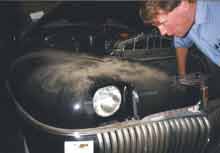Snow Job
The response to last week's snow feature has been remarkable - the topic clearly resonates with our visitors, and not a few of you are as tired of snow as I am. Jim Benjaminson reports that there's still plenty of snow in North Dakota, where this Orient Buckboard was photographed about a hundred years ago on the streets of Milton. They didn't have snow tires, so our inventive Dakotans wrapped some rope around the rear tires.
Maybe skittishness about snow is a New World thing. Joris Bergsma, our mentor who runs the inspirational PreWarCar.com, says the Dutch don't have problems driving their old cars in snow. He sent this pic of Bas Jansen exercising his Austin Seven special in the recent snowfalls in The Netherlands. Bas, with his father Gerrit, runs Carrosserie Bouw Jansen (not to be confused with Jensen Motors, the British coachbuilders who bodied many well-known 1950s-70s cars). Bas and his father built the anatomically-correct aluminum body for this special.
Europeans seem to revel in winter driving. Who else would organize a February rally for historic cars, the Neige et Glace, held annually in France.
Mother Nature did not take kindly to my last week's comments. Hardly had I posted to the CarPort than she sent another helping of wet snow to Connecticut. It's melting now, though. Soon we'll be able to start our spring plowing.

